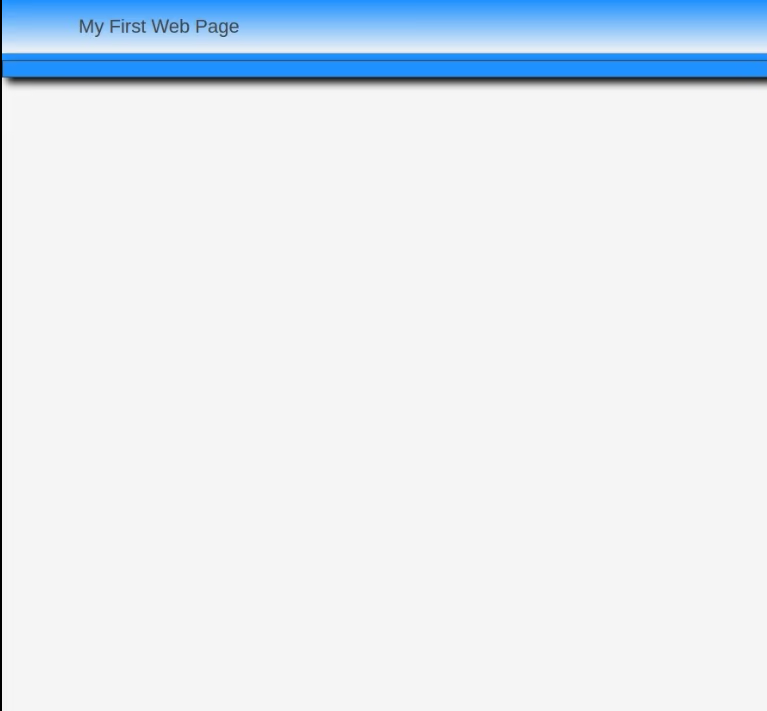How to Create a Web Page with HTML5 and CSS
📖 Add Paragraph Tag and Style sheet Settings
You should complete these lessons in order. If you haven't completed the first exercise, go back and start there.
Completing Your Page Header
We're going to complete our web page header by adding some paragraph text.
To do this, we only need to add 1 line of code to our HTML page.
Then we'll define the appearance using our style sheet.
👉Note: We use a paragraph tag in our header and save the H1 tag for use in web page content. You should only use ONE h1 tag in any page. Use keywords in your h1 tag. A little SEO advice.
Third Exercise
Copy and Paste the code shown in drk red inside of the header element:
<header> <p>My First Web Page</p> </header>
🔴 Save myfirstpage.html
👀 Look at it in your browser if you want to see how it displays before you add the style settings.

Now 3 blue boxes and some black text in the top one.
Define the header's paragraph tag
We added a paragraph tag for our site header text to the html code. We need to define the text and locate it in the desired positions using the style sheet.
The next block of CSS code defines the appearance of the text of the p tag and then positions it within the header element.
Copy and paste the code into your style sheet.
Explanation below:
header p {
font-size: clamp(1.5rem , 1.5rem + .5dvw , 2.25rem) ; /* 24 to 36 px */
line-height : clamp ( 1.8rem , 1.8rem + .5dvw , 2.7rem); /* 1.2 to 1.5 X size of text */
text-indent : 0;
text-align : left;
color:#fff;
text-shadow:2px 2px 4px #000}
🔴 Save myfirstpage.html
👀 Preview in the browser.
Refresh or reload if the page is already open.
The Result

Were you successful?
The display may vary in appearance depending on the width of your browser window and the viewing resolution.
If you don't see something similar, check the code that you added to your HTML page and style sheet.
The exact order of placing entries in your style sheet isn't critical except for the first and second blocks.
You should try to keep it organized by placing container definitions with container definitions and text definitions with text definitions. Or learn to use the newer nesting technique demonstrated in our Flexbox Tutor.
We'll show you a practical order for placement as we go along.
Test Your Comprehension
💡Take a quiz on the information presented so far.
More Helps
If the information on the Clamp Function is confusing, you might want to take a time out and study the simple Tutorial we provide. Clamp Tutor
Ready to Proceed
When you get everything working with the desired result in your browser, you are ready to proceed to the next exercise.
Don't be afraid to delete all your work and start over from the beginning!
Don't go on unless you have a basic understanding of the procedures presented so far.
📦Think you can use the Explanation Button Tool on your site. Download the Explanation Kit and try it for yourself. It's plug in ready.
Need something more advanced. Check out our Web Development Resources page for some more advanced tutorials and reference guides for HTML5, CSS3, Responsive Design and SEO.